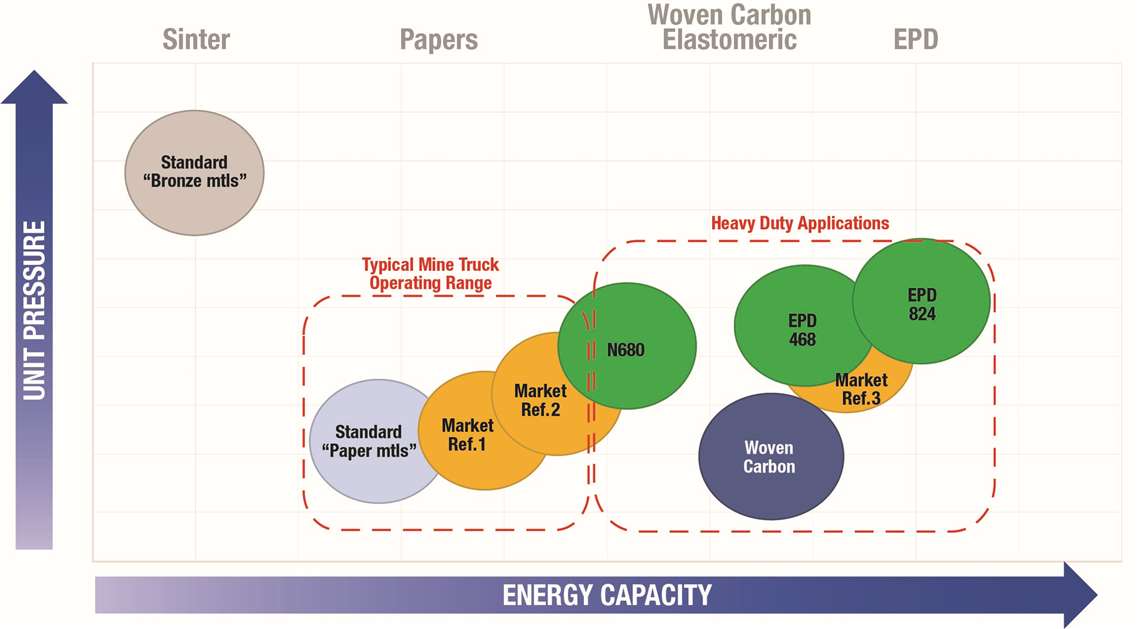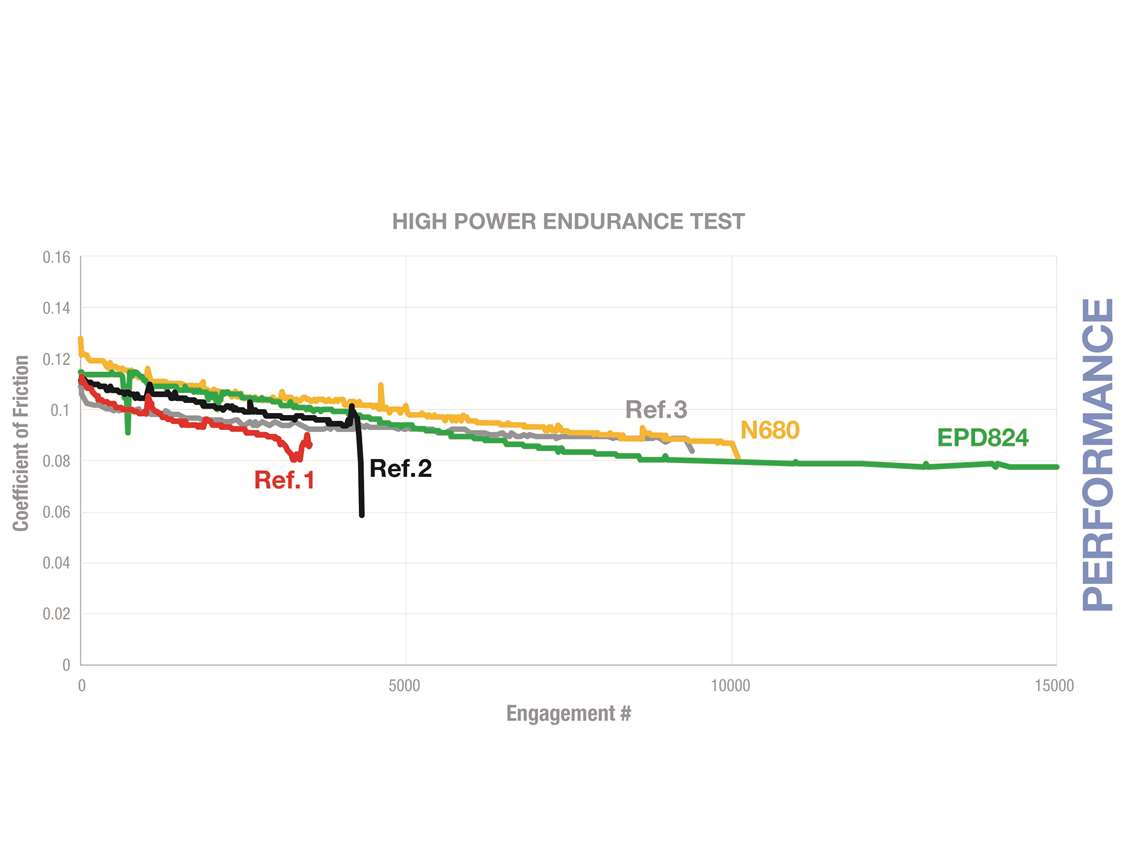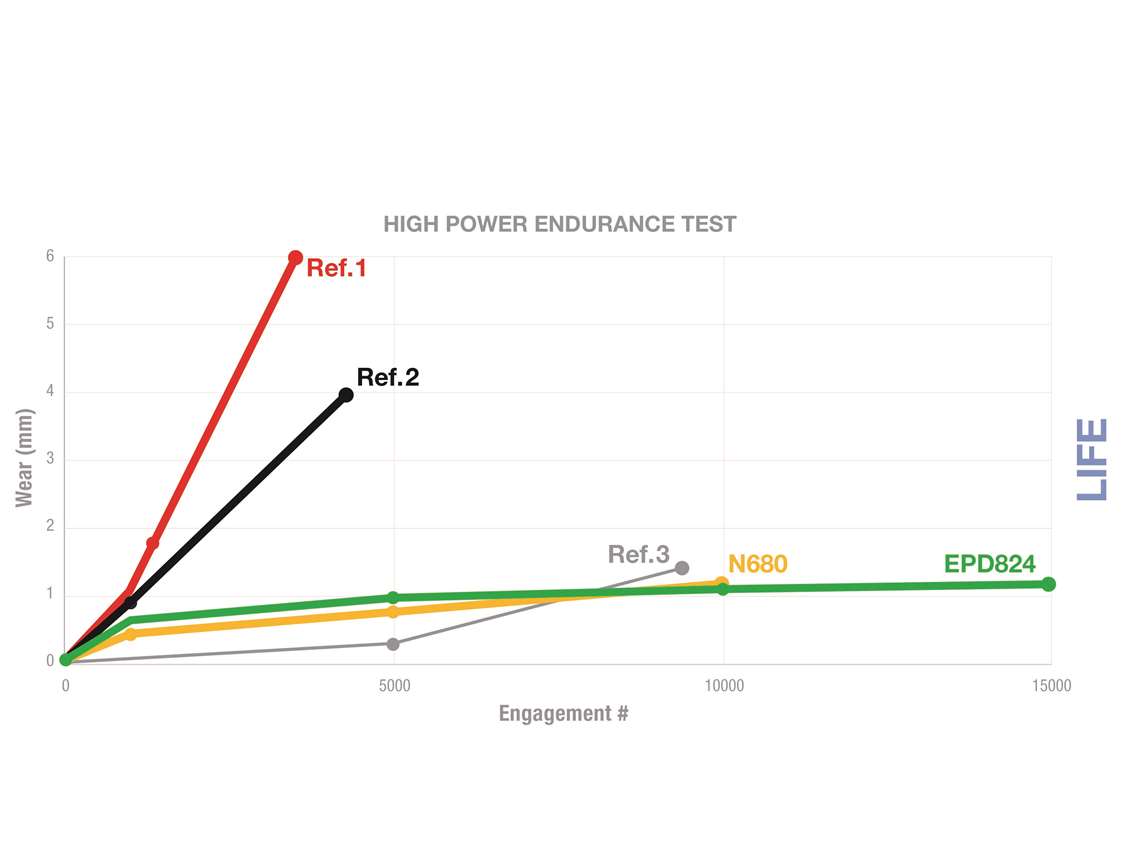Advanced Friction Materials
08 April 2021
Carlisle Brake & Friction explained latest developments in brake and transmission friction materials for high power density applications.
Alessandro Gamba, Friction Research & Development director at Carlisle Brake & Friction, told Diesel Progress International that his company has been working to develop and launch its latest friction material generation and grow its presence in the off-highway market for brake discs and transmissions. Among the company’s target markets are also aerospace and military.
“Lately we have concentrated on the development of a new generation of friction materials for wet applications launching three new products on the market (N680, EPD468 and EPD824) in the last twelve months,” said Gamba.
“We are seeing an increasing number of power-dense applications, which require materials that can handle higher energy. Our latest solutions offer this and in turn provide designers an opportunity to reduce the overall footprint of the brake system, by reducing the number of discs in the complete system. Reducing the transmission package, saving on fuel consumption and increasing battery life in electric applications, are all benefits that can be achieved with innovative friction materials.”
In the 1980s, the market for friction materials transitioned from 1960s-era sintered metal formulas to standard papers simultaneously enabling higher energy applications and reducing costs.
In the early 2000s Carlisle developed carbon-based papers to further increase the energy limit of wet friction papers. These materials are now primarily used for high-energy brake and transmission applications. Development in this area still continues, and the recently released N680 type has become the latest reference material for heavy-duty applications, from powershift transmissions to brakes.
 Performance comparison, from sintered metal friction materials to the latest developments in EPD materials. N680 and EPDs friction materials will extend energy capabilities in heavy-duty applications.
Performance comparison, from sintered metal friction materials to the latest developments in EPD materials. N680 and EPDs friction materials will extend energy capabilities in heavy-duty applications.
Moving beyond the performance of carbon papers has previously required a transition to woven carbon materials, which brings higher performance at a higher price point resulting in it being primarily used for military and mining applications.
“Carlisle saw the performance gap between carbon paper and woven carbon materials as an opportunity and started the development of its next generation friction materials, aimed at delivering a more cost competitive high energy material to meet the market needs,” said Gamba. “The result of this is our next generation of carbon paper N680 and new EPD (Energy, Performance and Durability) material family which significantly expand the power capabilities of wet friction materials.”
“We have always worked to develop a material with more stable behaviour under different energy and temperature conditions,” he said. “EPD materials are a hybrid mix between carbon papers and elastomeric materials with an innovative formulation that combines low stiffness and excellent durability, very high energy performances but impressive friction stability.”
EPD materials surpass the energy performances of woven carbon and elastomeric: “We believe that this is a unique market offering. While achieving a more stable behaviour, EPD also provide better quality of engagement and a superior noise, vibration, and harshness (NVH) performance” commented Gamba.
Advanced solutions for transmissions
The launch of N680 brought significant performance improvements including 25% higher energy capacity and 10% better dynamic torque under certain conditions, compared to the commonly used paper materials in the market, along with very good NVH behaviour and superior heat management.
 Endurance tests on the newer N680 carbon paper material and the EPD824 showed significant improvements on performances compared to reference materials on the market.
Endurance tests on the newer N680 carbon paper material and the EPD824 showed significant improvements on performances compared to reference materials on the market.
According to Robert Lamport, EPD Friction Development leader, EPD materials are the most significant step in performance improvement of the past 15 years or so: “Based on our current analysis, with EPD we will reach +50% in the energy performance and double product life especially in critical applications, together with much lower noise emissions.
“Usually, high elasticity corresponds to lower friction material wear life, but EPD shows a much higher elasticity than traditional paper materials and still delivers double the wear life. This characteristic has been proved by extensive bench and field tests.”
After two years of testing, EPD824 is validated in powershift transmission of leading powertrain manufacturer for construction equipment uses.
Advanced solutions for brakes
“Thanks to its elasticity and improved noise damping characteristics, EPD824 offers the possibility to eliminate damper discs in wet brake applications,” Gamba said, explaining that damper discs in cork are used to reduce vibrations and improve the brake performance while not being involved in torque transmissions.
“Especially in large heavy-duty applications like mining trucks and loaders where brake discs are quite large components, eliminating damper discs enables a considerable size reduction for the whole package,” he explained. “Until now and with the existing materials it has never been possible to remove damper discs, but with EPD824 this is now a possibility and furthermore its premium power capability also enables the number of discs in a stack to be reduced, resulting in significant drag and fuel consumption improvements.”
“At Carlisle Brake & Friction we understand that challenges of engineering friction systems to achieve the specific performance requirements for a customer’s application. Our core values have been defined accordingly: mastering the application with a focus to an optimum balance between performance, efficiency, and total cost of ownership,” explained Gamba. “Over-engineering must be avoided to ensure competitiveness, and potential design issues must be eliminated to maximise reliability. The new materials, together with our highly engineered expertise, help our customers to achieve this”.
 While possessing a higher elasticity, N680 and EPD materials are able to reach double the wear life of reference paper materials, up to an impressive number of engagements
While possessing a higher elasticity, N680 and EPD materials are able to reach double the wear life of reference paper materials, up to an impressive number of engagements
The research and development work at Carlisle is based on a solid combination of simulation analysis followed by testing. The company has developed tools to minimize engineering time and first-time application engineering, such as Computational Fluid Dynamics (CFD), drag, thermal management, discs buckling, and finite element analysis (FEA).
As for testing capabilities, Carlisle has one of the most extensive range of test rigs in the off-highway market: “We can test discs globally on standard dyno benches such as SAE#2 or full scale,“ said Gamba. “In Bloomington, IN, USA, we have one of the biggest dynamometers in the world, where we can handle an entire wet brake for a 100-ton truck; while in Italy we designed a unique test bench that we use for drag, oil flow simulations and groove design”.
This enables Carlisle to accurately reproduce customers working conditions, reducing development and validation times by up to 30%, for faster new product launches.
Besides these latest innovations for wet applications, Carlisle Brake & Friction has been developing dry materials for motorsport, rail and off-highway brakes. “We are also pushing our research and studies on what we call “smart” solutions, that are materials capable of interacting with the entire system, for example with the use of sensors that monitor wear,” Gamba concluded.
This story first appeared in the March/April issue of Diesel Progress International. To subscribe, click here.
STAY CONNECTED




Receive the information you need when you need it through our world-leading magazines, newsletters and daily briefings.
POWER SOURCING GUIDE
The trusted reference and buyer’s guide for 83 years
The original “desktop search engine,” guiding nearly 10,000 users in more than 90 countries it is the primary reference for specifications and details on all the components that go into engine systems.
Visit Now
CONNECT WITH THE TEAM









